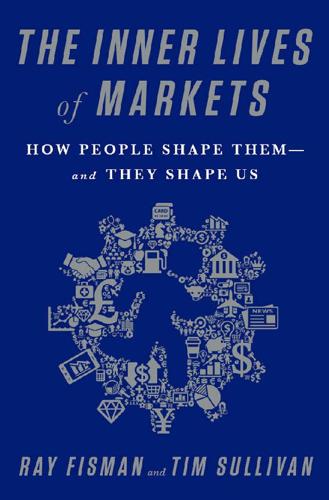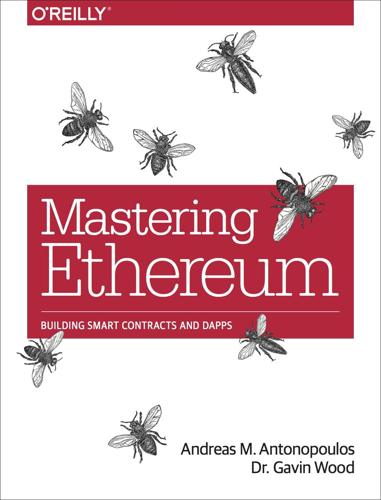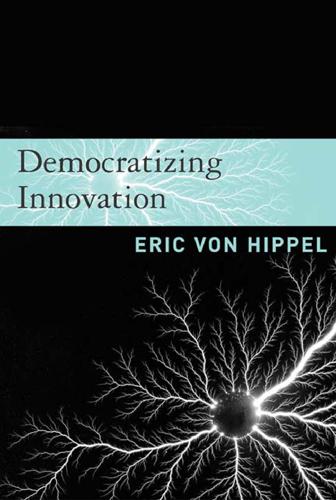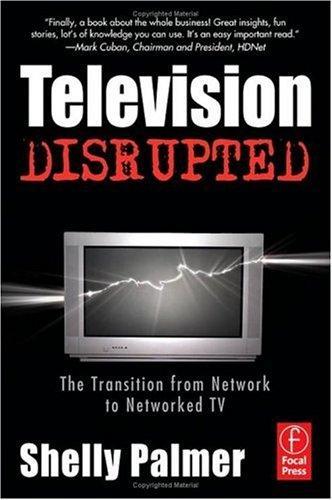
The Inner Lives of Markets: How People Shape Them—And They Shape Us
by
Tim Sullivan
Published 6 Jun 2016
Anticipating the new economics of the mid-twentieth century, he realized that where markets are concerned, information is power. Vickrey Auction Markets for Everything Although poets and stamp dealers may have intuited the value of second-price auctions, Vickrey provided the theoretical underpinning for these hunches, allowing the theory to be enriched and applied with greater sophistication. This in turn vastly expanded their audience. The Vickrey auction held enormous appeal not just to economists, who were captivated by its theoretical properties, but also those with more commercial interests. This was in part for the kinds of sales that interested Vickrey—auctioning off government-owned oil concessions or assigning road-building contracts—but also, with the advent of the internet, it extended to just about anything.
…
That was exactly what Morgan Sword, director of labor economics at MLB, thought after reading the Wikipedia entry for “Vickrey auction” as he looked into alternatives for the upcoming sale of Japanese star Masahiro Tanaka’s contract. Tanaka, a pitcher on the Rakutan Golden Eagle roster, was expected to announce his interest in moving to the majors in November. Sword’s experiences in pitching the Vickrey auction to the various interested parties—teams in America and Japan, along with their players’ unions—serve as a case study in the challenges in taking an idea from auction theory and putting it into practice. The frailties of human nature never made it onto Rothkropf’s list of Vickrey auctions’ thirteen fatal flaws, but they proved critical to understanding the ultimate outcome of Sword’s proposal to sell Tanaka’s contract via a second-price auction.
…
And he never would’ve gotten that sinking feeling of having overpaid: as the bids were unsealed, he could’ve follow along at ease with the knowledge that he wouldn’t have to pay more than what was required to win. Finally, a Vickrey auction is also “socially efficient” in the sense that, if all participants bid their own valuations, by definition the high bidder is the one who values it the most. By contrast, the social efficiency of a first-bid auction can be undone by a timid offer from a high-value bidder or a particularly aggressive bid from a lower-value one. Thus, a Vickrey auction achieves the holy grail of efficiency, and does it through a mechanism that’s transparent and straightforward. If MLB management knew about William Vickrey, perhaps the Japanese posting system wouldn’t have been in crisis.

Algorithms to Live By: The Computer Science of Human Decisions
by
Brian Christian
and
Tom Griffiths
Published 4 Apr 2016
In fact, there’s one auction design in particular that cuts through the burden of mental recursion like a hot knife through butter. It’s called the Vickrey auction. Named for Nobel Prize–winning economist William Vickrey, the Vickrey auction, just like the first-price auction, is a “sealed bid” auction process. That is, every participant simply writes down a single number in secret, and the highest bidder wins. However, in a Vickrey auction, the winner ends up paying not the amount of their own bid, but that of the second-place bidder. That is to say, if you bid $25 and I bid $10, you win the item at my price: you only have to pay $10. To a game theorist, a Vickrey auction has a number of attractive properties.
…
., shading your bid) risks losing the auction for no good reason, since it doesn’t save you any money—because if you win, you’ll only be paying the value of the second-highest bid, regardless of how high your own was. This makes the Vickrey auction what mechanism designers call “strategy-proof,” or just “truthful.” In the Vickrey auction, honesty is literally the best policy. Even better, honesty remains the best policy regardless of whether the other bidders are honest themselves. In the prisoner’s dilemma, we saw how defection turned out to be the “dominant” strategy—the best move no matter whether your partner defected or cooperated. In a Vickrey auction, on the other hand, honesty is the dominant strategy. This is the mechanism designer’s holy grail.
…
You do not need to strategize or recurse. Now, it seems like the Vickrey auction would cost the seller some money compared to the first-price auction, but this isn’t necessarily true. In a first-price auction, every bidder is shading their bid down to avoid overpaying; in the second-price Vickrey auction, there’s no need to—in a sense, the auction itself is optimally shading their bid for them. In fact, a game-theoretic principle called “revenue equivalence” establishes that over time, the average expected sale price in a first-price auction will converge to precisely the same as in a Vickrey auction. Thus the Vickrey equilibrium involves the same bidder winning the item for the same price—without any strategizing by any of the bidders whatsoever.

Understanding Sponsored Search: Core Elements of Keyword Advertising
by
Jim Jansen
Published 25 Jul 2011
The theoretical basis for the sponsored-search auction is the Generalized Second Priced (GSP) auction. The Vickrey auction is the ideal form of GSP auction, so we start here with a brief discussion of the ideal form. A Vickrey auction A Vickrey auction is a type of sealed-bid auction where bidders submit bids without knowing the bid of the other people in the auction. The highest bidder wins, but the bidder pays the amount of the second-highest bid. Very similar to the Standard English auction that one might see at a livestock sale, where all bids are public and known by all, the Vickrey auction gives bidders an incentive to bid their true value. Naturally, this view of the value can be false, incorrect, or misguided.
…
Therefore, each bid represents the true valuation of the resources by the buyer. The pure Vickrey auction deals with auctions where a single good is being sold (i.e., a second-price sealed-bid auction). When multiple identical resources are for sale, things get more complex, and one can apply the same payment principal (i.e., have all winning bidders pay the amount of the highest nonwinning bid). This is known as a uniform price auction. Unfortunately, this situation does not result in bidders bidding their true valuations in most situations, and the auction does not reach stability. Vickrey-Clarke-Groves (VCG) mechanism A generalization of the Vickrey auction that maintains the incentive to bid truthfully is known as the Vickrey-Clarke-Groves (VCG) mechanism.
…
In classic auction theory, the participants are interested in maximizing their own situation without considering others [9]. Auction theory research has lead to the development of several auction formats or types of auction markets. The format that we are most interested in is the Generalized Second Price auction and its poster-child auction, the Vickrey auction, as well as the generalized form, the Vickrey-Clarke-Groves auction. Potpourri: Google AdWords was the first sponsored-search platform that utilized the format now known as Generalized Second Price auction. The Serious Game of Bidding 181 The Generalized Second Price auction quickly became the standard for keyword auctions, with an amazingly broad impact on the Web and e-commerce.

The Undercover Economist: Exposing Why the Rich Are Rich, the Poor Are Poor, and Why You Can Never Buy a Decent Used Car
by
Tim Harford
Published 15 Mar 2006
To a theorist, this doesn’t seem odd at all: after all, in a traditional auction at Sotheby’s or Christies, the price is also set by the second-highest bidder, because bidding stops when the second-highest bidder drops out. To the press and many others, this Vickrey auction looked nothing short of crazy. The problem with the Vickrey auction is not substantive but stylistic: in a traditional auction nobody ever finds out the maximum price the highest bidder would have been willing to pay, but in a Vickrey auction that fact is made public. Justifiably, New Zealanders wanted to know why a bidder who had offered NZ$100,000 (about $72,000) for a license only had to pay NZ$6 ($4+) or why one who had offered NZ$7 ($5+) million was only coughing up NZ$5,000 (around $3,600).
…
The New Zealand government, which auctioned radio spec- trum as early as 1990 with advice from some economists who • 163 • T H E U N D E R C O V E R E C O N O M I S T seemed to have a slender grasp on reality, learned such lessons the hard way. The auctions were held without making sure that there was any interest from bidders, without minimum prices, and using a theoretical curiosity called a “Vickrey auction,” which led to considerable embarrassment. (The auction was named after its inventor, Nobel laureate William Vickrey, who made major early advances in applying game theory to auctions.) The Vickrey auction is a second-price sealed-bid auction. The “sealed bid” means that each bidder writes down a single bid and seals it in an envelope. When the envelopes are opened, the highest bidder wins. “Second-price” is the curious rule that the winner pays not his bid but that of the second-highest bidder.
…
Justifiably, New Zealanders wanted to know why a bidder who had offered NZ$100,000 (about $72,000) for a license only had to pay NZ$6 ($4+) or why one who had offered NZ$7 ($5+) million was only coughing up NZ$5,000 (around $3,600). These figures were embarrassing. The theorists knew that on average, Vickrey auctions make just as much money as other auctions because, by not demanding payment of the highest bid, they encourage all bidders to offer more. But what the theorists knew did not matter to the press and to the public: the harsh reality is that Vickrey auctions were seen as a failure of the New Zealand government. Game theory can help predict some problems, such as cheating in the US auction. Others, such as the public reaction in New • 164 • T H E M E N W H O K N E W T H E V A L U E O F N O T H I N G Zealand, simply don’t show up in the theoretical analysis.

Mastering Ethereum: Building Smart Contracts and DApps
by
Andreas M. Antonopoulos
and
Gavin Wood Ph. D.
Published 23 Dec 2018
The auction system is a complex piece of code (over 500 lines); most of the early development efforts (and bugs!) in ENS were in this part of the system. However, it’s also replaceable and upgradeable, without risk to the funds — more on that later. Vickrey auctions Names are distributed via a modified Vickrey auction. In a traditional Vickrey auction, every bidder submits a sealed bid, and all of them are revealed simultaneously, at which point the highest bidder wins the auction but only pays the second-highest bid. Therefore bidders are incentivized not to bid less than the true value of the name to them, since bidding their true value increases the chance they will win but does not affect the price they will eventually pay.
…
encryption, Cryptography(see also keys and addresses) ENS (Ethereum Name Service), Quick Glossary, The Ethereum Name Service (ENS)-Resolving a Name to a Swarm Hash (Content)bottom layer: name owners and resolvers, Bottom Layer: Name Owners and Resolvers-Resolvers choosing a valid name, How to choose a valid name DApps and, The Ethereum Name Service (ENS)-Resolving a Name to a Swarm Hash (Content) design of, The ENS Specification-Top Layer: The Deeds history of, History of Ethereum Name Services managing your ENS name, Managing Your ENS Name middle layer: .eth nodes, Middle Layer: The .eth Nodes Namehash algorithm, The Namehash algorithm registering a name, Registering a Name-Registering a Name resolvers, Resolvers resolving a name, ENS Resolvers-Resolving a Name to a Swarm Hash (Content) resolving a name to a Swarm hash, Resolving a Name to a Swarm Hash (Content) root node ownership, Root node ownership specification, The ENS Specification top layer: deeds, Top Layer: The Deeds Vickrey auctions, Vickrey auctions entropydefined, Quick Glossary private key generation and, Generating a Private Key from a Random Number entropy illusion security threat, Entropy Illusionpreventative techniques, Preventative Techniques real world example: PRNG contracts, Real-World Example: PRNG Contracts vulnerability, The Vulnerability EOA (Externally Owned Account)basics, Externally Owned Accounts (EOAs) and Contracts contract accounts compared to, Smart Contracts and Solidity defined, Quick Glossary keys and addresses, Keys and Addresses transmitting data payload to, Transmitting a Data Payload to an EOA or Contract-Transmitting a Data Payload to an EOA or Contract transmitting value to, Transmitting Value to EOAs and Contracts ephemeral private key, ECDSA Math equity tokensdefined, Using Tokens: Utility or Equity utility tokens as, It’s a Duck!
…
UTM (Universal Turing machine), Ethereum and Turing Completeness V value field, Transaction Value and Data-Transmitting Value to EOAs and Contracts variable declarations, ordering of, Function and Variable Ordering version pragma, Selecting a Solidity Compiler and Language Version Vickrey auctions, Vickrey auctions view (function keyword), Functions visibility specifiers, Default Visibilities-Real-World Example: Parity Multisig Wallet (First Hack) vulnerabilities, Vulnerabilities and Vyper(see also security; specific attacks/vulnerabilities) Vyper, Introduction to Ethereum High-Level Languages, Smart Contracts and Vyper-Conclusionsclass inheritance, Class Inheritance compilation, Compilation contract vulnerabilities and, Vulnerabilities and Vyper decorators, Decorators defined, Quick Glossary function ordering, Function and Variable Ordering function overloading, Function Overloading modifiers, Modifiers overflow protection, Protecting Against Overflow Errors at the Compiler Level preconditions/postconditions, Preconditions and Postconditions reading/writing data, Reading and Writing Data Solidity compared to, Comparison to Solidity-Preconditions and Postconditions variable ordering, Function and Variable Ordering variable typecasting, Variable Typecasting W wallets, Wallets-Conclusionsbest practices for, Wallet Best Practices-Navigating the HD wallet tree structure browser wallets, Browser Wallets choosing, Choosing an Ethereum Wallet cold-storage wallets, Extended public and private keys creating HD wallets from root seed, Creating an HD Wallet from the Seed defined, Quick Glossary, Choosing an Ethereum Wallet, Wallets deterministic, Wallet Technology Overview, Deterministic (Seeded) Wallets duress wallet, Optional passphrase in BIP-39 Emerald Wallet, Choosing an Ethereum Wallet HD (see hierarchical deterministic wallets) Jaxx, Choosing an Ethereum Wallet, Mobile (Smartphone) Wallets, Jaxx MetaMask (see MetaMask) Mist, Quick Glossary, Mist mnemonic codes (BIP-39), Seeds and Mnemonic Codes (BIP-39), Mnemonic Code Words (BIP-39)-Working with mnemonic codes mobile, Mobile (Smartphone) Wallets MyCrypto, MyCrypto MyEtherWallet, Choosing an Ethereum Wallet, MyEtherWallet (MEW), MyCrypto nondeterministic, Wallet Technology Overview-Nondeterministic (Random) Wallets Parity Multisig Wallet hacks, Real-World Example: Parity Multisig Wallet (Second Hack)-Real-World Example: Parity Multisig Wallet (Second Hack), Real-World Example: Parity Multisig Wallet (First Hack) remote clients compared to, Should I Run a Full Node?

Democratizing innovation
by
Eric von Hippel
Published 1 Apr 2005
Schreier and Franke 162 Chapter 11 (2004) also obtained information on the importance of toolkit quality in a study of the value that users placed on consumer products (scarves, T shirts, cell phone covers) customized with a simple, manufacturer-supplied toolkit. They found user willingness to pay for custom designs, as measured by Vickrey auctions, was significantly negatively affected by the difficulty of creating custom designs with a toolkit. In contrast, willingness to pay was significantly positively affected by enjoyment experienced in using a toolkit. With respect to industry and market conditions, the toolkit-for-user innovation approach to product design is likely to be most appealing to toolkit suppliers when the heterogeneous needs of many users can be addressed by a standard solution approach encoded in a toolkit.

A Little History of Economics
by
Niall Kishtainy
Published 15 Jan 2017
But in bidding £250,000 you’d lose the house if someone else bid over £250,000, so the best you can do is to bid your true valuation. Vickrey wasn’t the first to have the idea. In the eighteenth century, the German writer Goethe sold a publisher one of his poems using a second-price auction. Today, eBay auctions work roughly according to the second-price principle, although they’re not true Vickrey auctions. One complication is that participants’ bids are revealed as the clock ticks, which encourages tactics like waiting until the last moment to place bids. The catch with Vickrey’s auction is that the seller has to settle for an amount equal to the second highest rather than the highest bid. Which auction is the best?

Television disrupted: the transition from network to networked TV
by
Shelly Palmer
Published 14 Apr 2006
As we have said, these networks will undoubtedly coexist. Unfortunately, the contact network value chain is extremely unfriendly to the way that content providers like to monetize their content. One very probable future is the evolution of a new value chain for video content that closely mimics the Vickrey auctions made popular by search engine advertising. It can’t truly happen until the traditional media business reinvents they way television media is bought and sold. Will the content providers compete with the contact providers by creating a truly modern, computerized marketplace for media? One that resembles “best practices” electronic exchanges like the NASDAQ, as opposed to the existing media marketplace —which most closely resembles a fifteenth-century textile bazaar?

Networks, Crowds, and Markets: Reasoning About a Highly Connected World
by
David Easley
and
Jon Kleinberg
Published 15 Nov 2010
The terminology comes from the original format for such auctions, in which bids were written down and provided in sealed envelopes to the seller, who would then open them all together. The highest bidder wins the object and pays the value of her bid. 4. Second-price sealed-bid auctions, also called Vickrey auctions. Bidders submit simultaneous sealed bids to the sellers; the highest bidder wins the object and pays the value of the second-highest bid. These auctions are called Vickrey auctions in honor of William Vickrey, who wrote the first game-theoretic analysis of auctions (including the second-price auction [393]). Vickery won the Nobel Memorial Prize in Economics in 1996 for this body of work. 9.2.

Artificial Intelligence: A Modern Approach
by
Stuart Russell
and
Peter Norvig
Published 14 Jul 2019
So bidding vi is optimal for all possible values of bo, and in fact, vi is the only bid that has this property. Because of its simplicity and the minimal computation requirements for both seller and bidders, the Vickrey auction is widely used in distributed AI systems. Internet search engines conduct several trillion auctions each year to sell advertisements along with their search results, and online auction sites handle $100 billion a year in goods, all using variants of the Vickrey auction. Note that the expected value to the seller is bo, which is the same expected return as the limit of the English auction as the increment d goes to zero. This is actually a very general result: the revenue equivalence theorem states that, with a few minor caveats, any auction mechanism in which bidders have values vi known only to themselves (but know the probability distribution from which those values are sampled), will yield the same expected revenue.
…
Also, note that the agent with the highest vi, might not win the auction. This is offset by the fact that the auction is more competitive, reducing the bias toward an advantaged bidder. A small change in the mechanism for sealed-bid auctions leads to the sealed-bid second-price auction, also known as a Vickrey auction.5 In such auctions, the winner pays the price of the second-highest bid, bo, rather than paying his own bid. This simple modification completely eliminates the complex deliberations required for standard (or first-price) sealed-bid auctions, because the dominant strategy is now simply to bid vi; the mechanism is truth-revealing.